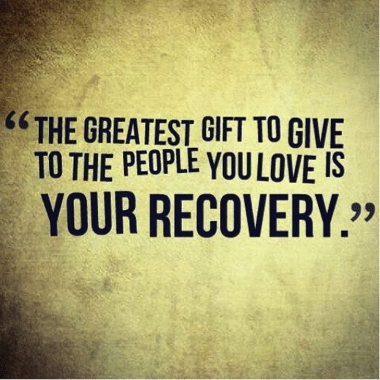Together we can make a difference preventing illness, providing evidenced-based interventions and fostering environments that promote addiction recovery.
According to Doug Thomas, Director of the Utah Division of Substance Abuse and Mental Health (DSAMH), “Hope, Health, Healing” is the continued theme in Utah.
Changes in the healthcare landscape have opened the way for people to get their behavioral health needs met just like their physical needs. Prevention works, treatment is effective, and people can and do recover from mental health and substance use conditions. Over time, these changes should decrease stigma and discrimination leading to increased access and understanding for people with mental illness and substance use disorders.
Strategies to Meet the Vision to Build a Better Behavioral Health System
In Utah, DSAMH has developed five strategies to meet the vision of development and implementation of a strategic plan to enhance Utah’s public behavioral health system. The initiatives were carefully chosen to build on past achievements and to take advantage of emerging opportunities in a changing world. The goal is to build a better behavioral health system for all. These strategies are:
Strategy 1:
Prevention and early intervention help individuals, families and communities avoid the costs and consequences of addiction or mental illness.
Strategy 2:
DSAMH is committed to the goal of Zero Suicides in Utah.
Strategy 3:
Promote Recovery DSAMH’s third strategy is to develop and implement a “recovery-oriented system of care” (ROSC).
Strategy 4:
Improve Services for Children and Adolescences
Strategy 5:
Health System Integration – Integrating the delivery of behavioral health services and physical health services is a key
Recovery-Oriented System of Care (ROSC)
The focus of this article is on Strategy Three – to promote recovery by implementing a “recovery-oriented system of care” (ROSC).
Treating drug addiction has proven to be a major challenge based on the multi-dimensionality of substance abuse which disrupts many aspects of an individual’s life. In the Utah Division of Substance Abuse and Mental Health (DSAMH’s), 2016 annual report Utah is moving forward with a vision is to contribute to the development of healthy individuals, families, and communities by treating substance use disorders and mental illnesses as serious chronic diseases.
Addiction is defined as a chronic relapsing brain disease which is characterized by compulsive drug seeking and use, despite the harmful consequences. It is considered a brain disease because drugs change the brain, the structure and how the brain works.
Treatment Need for Alcohol and Drug Dependence or Abuse
The results of the most recent National Survey on Drug Use and Health and the 2015 Student Health and Risk Prevention Survey 134,172 adults in Utah were classified as needing treatment for alcohol and drug dependence or abuse in 2015.
The public system is currently serving 14,729 individuals or 9.9% of the need. A combined total of approximately 146,252 adults and youth are in need of, but not receiving, substance abuse treatment services.
The good news is that prevention does work and there are proven effective treatment to help, and people do recover. DSAMH’s mission is to promote hope, health, and healing by reducing the impact of substance abuse and mental illness.
To achieve this mission, DSAMH provides leadership, promotes quality, builds partnerships, ensures accountability, and operates effective education and training programs.
DSAMH uses a public health approach to make its vision a reality. The guiding principles systems, services, programs, activities, strategies, and policies should be trauma-informed, evidence-based, and culturally and linguistically competent. Trauma-Informed care addresses individuals with mental health and substance use disorders are also dealing with trauma issues.
Utah-Substance Abuse Prevention Skills Training (SAPST)
Utahans’ are working together to create environments and conditions that support behavioral health and the ability of individuals to withstand challenges intended to prevent or reduce the risk of developing substance abuse and behavioral health problems. DSAMH trains and certifies Substance Abuse Prevention Specialist (SAPST) to assist individuals public, reduce stigma, and train the workforce and help individuals and families working toward recovery.
The Substance Abuse Prevention Specialist (SAPST) is a certified prevention worker using the Utah-Substance Abuse Prevention Skills Training (SAPST). Utah-SAPST takes a curriculum developed by the federal government Substance Abuse and Mental Health Services Administration-Center for Substance Abuse Prevention (SAMHSA-CSAP) and adds to it to cover Utah specific issues and strategies. Utah-SAPST provides an introduction to the fundamentals of substance abuse, mental illness, and suicide prevention based on the current research and practice in the field.
The training prepares practitioners to reduce the likelihood of substance abuse and Substance Abuse and Mental Health 38 Services, and Activities dsamh.utah.gov promote well-being among individuals, within families, workplaces, schools, and communities. The Utah-SAPST covers basic prevention science as well as policy issues and how the Utah Prevention System operates. Participants are introduced to Utah specific initiatives such as Parents Empowered, Prevention by Design, and how to build capacity at the local community level. In the fiscal year 2016, there were three pieces of training held with 63 people trained in Utah-SAPST (DSAMH 2016 Annual Report).
Principles of Drug Addiction Treatment and Effective Treatment Programs
According to the National Institute on Drug Abuse’s Principles of Drug Addiction Treatment is intended to address addiction to a wide variety of drugs, including nicotine, alcohol, and illicit and prescription drugs.
Drug addiction is characterized by intense and, at times, uncontrollable drug craving, along with compulsive drug seeking and use that persist even after devastating consequences. Therefore, treatment should be designed to provide services not only to the patient but to family members and other stakeholders who are trying to address the myriad of problems which occur due to drug abuse or addiction.
It is important to understand how addiction affects multiple brain circuits, including those involved in reward and motivation, learning and memory, and inhibitory control over behavior. This is why addiction is considered a brain disease. Some individuals are more vulnerable than others.
It is also important to consider the risk factors for substance abuse some of which include extreme economic deprivation, family history, i.e., genetic makeup, lack of commitment to school, peer pressure, the age of exposure to drugs, self-medicating due to trauma-exposure, PTSD, anxiety, and depression, and other environmental influences. Several studies have found that substance abuse developed following trauma exposure (25%–76%) or the onset of PTSD (14%–59%) in a high proportion of teens with substance abuse disorders.
Research suggests that traumatic stress or PTSD may make it more difficult for adolescents to stop using substances, as exposure to reminders of the traumatic event have been shown to increase drug cravings in people with co-occurring trauma and substance abuse (Sadalin, M. E., et al. , 2003).
Effective treatment programs reflect clinical practices when demonstrating the value of continuing care in treating addiction. There are a variety of approaches which have been tested and integrated into residential community settings. Patients typically require long-term or repeated episodes of care to achieve the ultimate goal of sustained abstinence and recovery of their lives. Treatment should address the patient’s overall health, mental, emotional, physical and spiritual.
The National Institute on Drug Abuse has developed a research-based guide to show the evidence-based principles of effective treatment. They are as follows:
- Addiction is a complex but treatable disease that affects the brain function and behavior.
- Understand there is no single treatment which is appropriate for everyone.
- Treatment needs to be readily available.
- Effective treatment attends to multiple needs of the individual, not just the patient’s drug abuse.
- Remaining in treatment for an adequate period of time is critical. Research indicates that drug-addicted individuals need at least three months in treatment. However, best outcomes occur with longer durations of treatment.
- Behavioral therapies including individual, family, or group counseling and are the most commonly used forms of drug abuse treatment.
- Medications are also an important element of treatment for many patients, especially when combined with counseling and other behavioral therapies.
- An individual’s treatment and service plans must be assessed continually and modified as necessary to ensure that it meets the patient’s changing needs.
- Many drug-addicted individuals also have other mental disorders, i.e., self- medicating.
- Medically assisted detoxification is only the first stage of addiction treatment and by itself does little to change long-term drug abuse.
- Treatment does not need to be voluntary to be effective.
- Drug use during treatment must be monitored continuously, as lapses during treatment do occur.
- Treatment programs should test patients for the presence of HIV/AIDS, hepatitis B and C, tuberculosis, and other infectious diseases as well as provide targeted risk-reduction counseling, linking patients to treatment if necessary.
Successful treatment programs offer continuing care and use techniques that have been proven to enhance client motivation. It is also important to recognize that multiple episodes of treatment may be necessary.
Clients in Stable Housing Stable housing is an important measure of successful treatment, as outcome studies have revealed that a stable living environment is a critical element in achieving long-term success in the reduction of substance abuse. Treatment also has been shown to help individuals with a substance use disorder achieve and maintain a stable living environment.
In Closing…
The State of Utah is not backing down from the issues of substance abuse and finding ways to offer effective treatment options and funding to assist anyone who is dealing with addiction and needs and wants help. Hope, Health, and Healing is the path to a life free of drugs and alcohol which offers the greatest gift of all – our good health which is our true wealth.
Cinthia McFeature, Ph.D.


